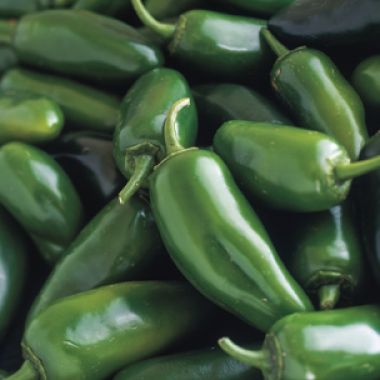
Over centuries of domestication, hundreds of varieties
of chiles have been developed from the earliest plants grown in Latin America. Requiring hot summers, they grow well in tropical areas.
Chiles are at their peak season from late summer to early autumn. In addition to contributing heat and depth of flavor to sauces and salsas, chiles can be stuffed with cheese, meat, or vegetables and then fried or baked. Roasted and sliced into ribbons, milder chiles can be stirred into soups or tossed with shredded meat for tacos, sandwich fillings, or egg dishes.
Selecting
Select firm, bright chiles that are free of blemishes, moldy stems, soft spots, or wrinkling. In general, the smaller and
more pointed the chile, the hotter it is. Rounded habaneros
and Scotch bonnets are the exceptions, as these two are among the hottest varieties.
Storing
Store all types of chiles in a plastic bag
in the refrigerator for up to 1 week.
Preparing
A compound called capsaicin gives chiles their heat. It is concentrated inside the chiles, so to lessen their heat, trim
off membranes and scrape away seeds. Since the heat from chiles can linger for hours on your skin, wear thin gloves or thoroughly wash your hands along with the cutting board and the knife as soon as you have finished working with them.
Related Recipes:
- Red Snapper Ceviche →
- Chili-Lime Pork Loin →
- Poblano Chilies Stuffed with Black Beans and Summer Squash →
- Jalapeño Sticky Wings →
- Corn and Roast Poblano Soup →
- Grilled Chicken Skewers with Habanero Chili and Allspice →
- Chorizo and Cheese Stuffed Jalapeños →
- Chicken Enchiladas with Tomatillo Sauce (Enchiladas Verdes) →
- Fresh Tomato and Chile Salsa (Salsa Mexicana) →
- Grilled Chicken with Plum-Jalapeño Relish →
- Ancho Chili Fajitas →
- Moroccan-Spiced Vegetarian Chili →











